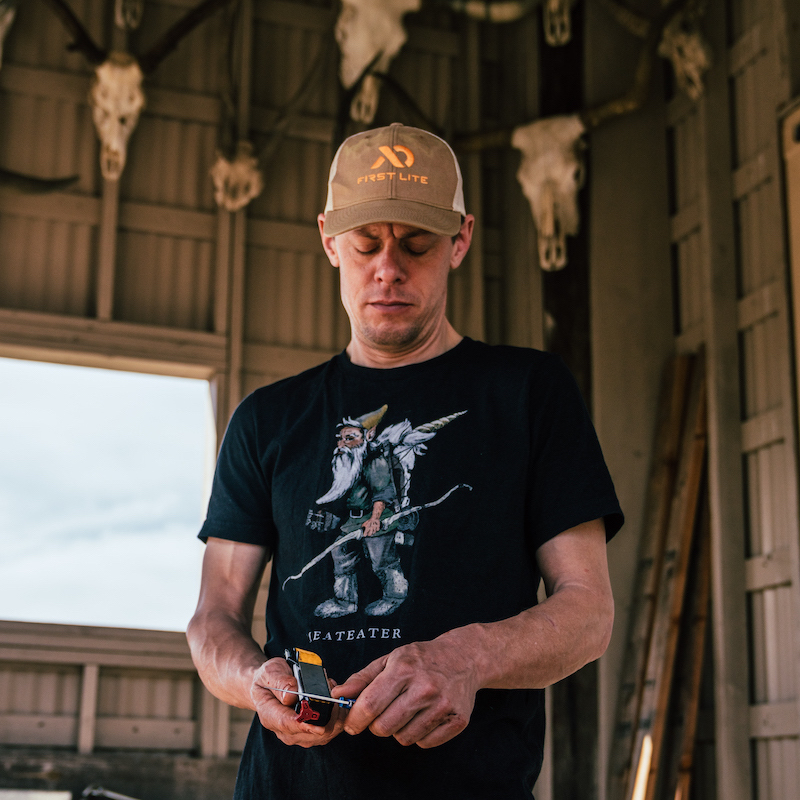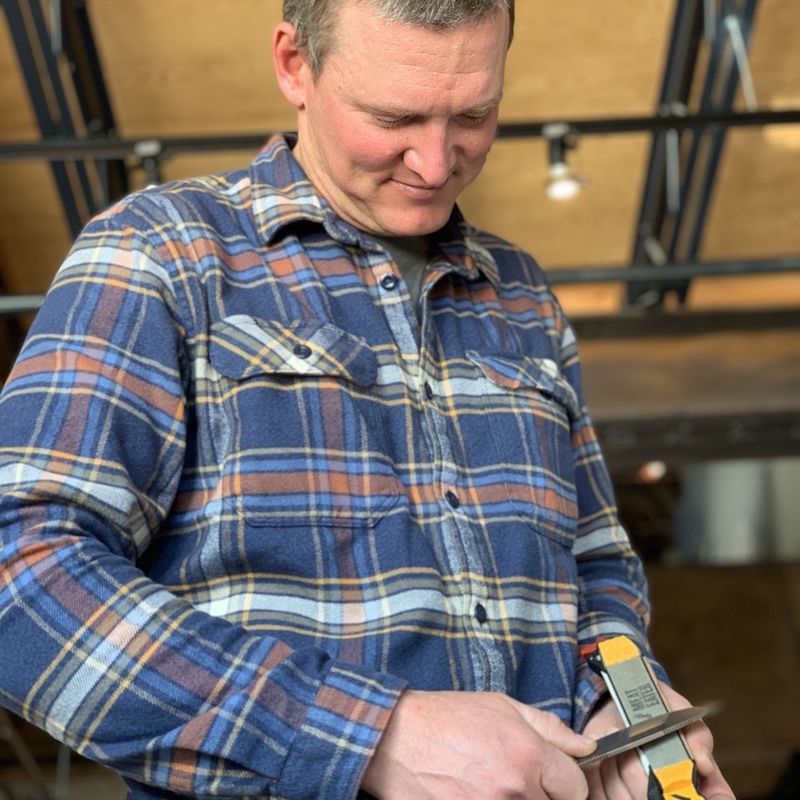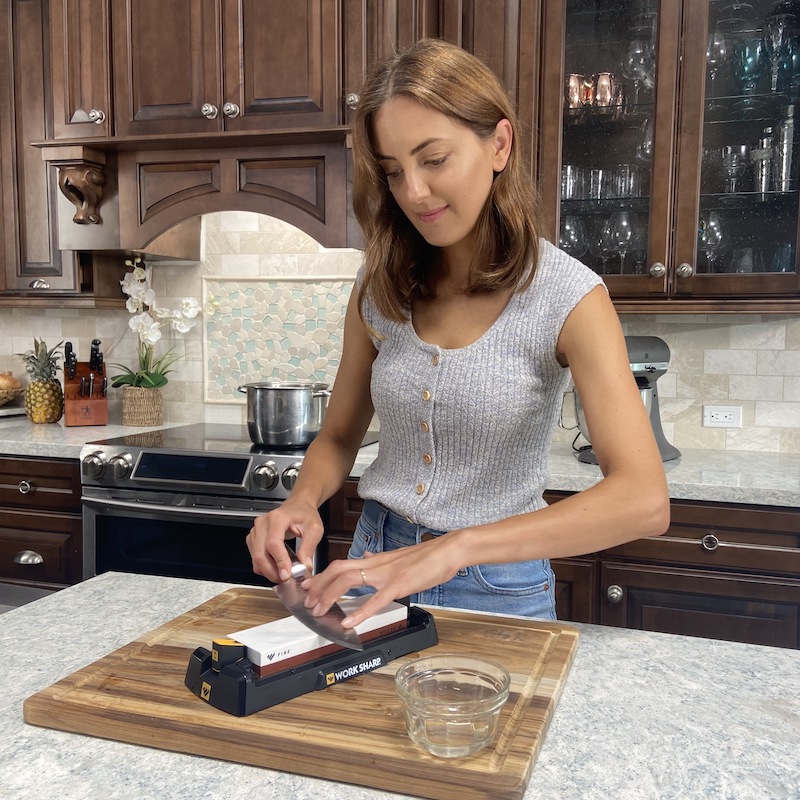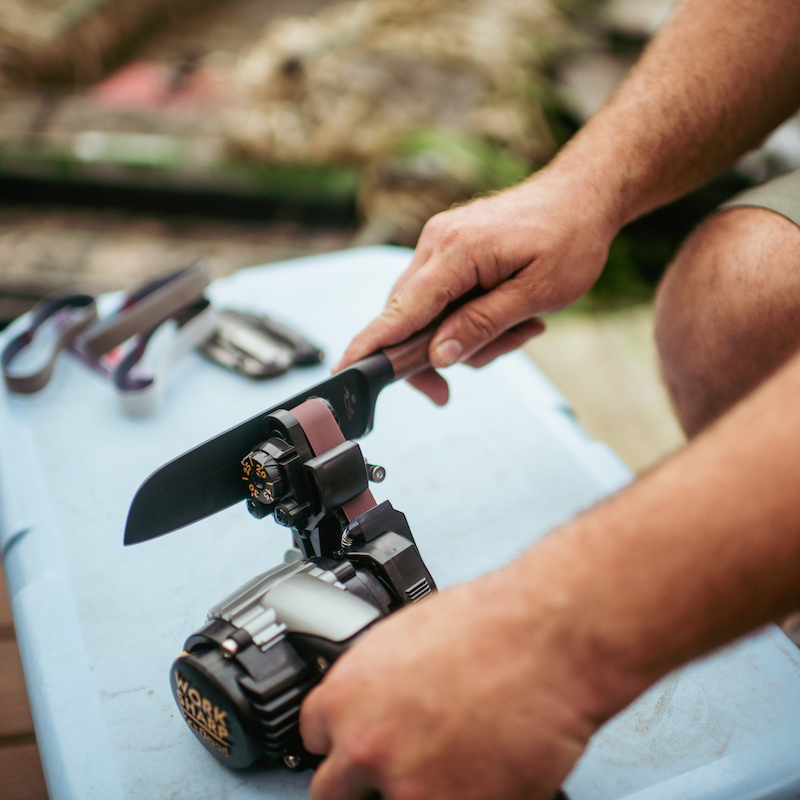
A sharp knife can be the difference between clean quarters in game bags and a trip to the E.R. to stitch up your slip-up. The simplest step in protecting yourself from injury when butchering in the field or cooking up your harvest in the kitchen is ensuring your blade is as sharp as can be.
While this may seem contradictory to some, a well-honed blade will cut with ease, whereas a dull edge requires more force to make a cut. That force could be enough to stick that blade into your thigh instead of the hindquarter you’re working on.
Here at MeatEater, we’ve partnered with Work Sharp because we believe they provide the best in the business to keep your blades on point, from high country hunts to home-cooked meals.
Jump to: Knife Sharpeners We Use
What to Look for in a Good Knife Sharpener
A good knife sharpener should (obviously) get your blades sharp, but it should also get the job done without much fuss and fight. It’s important to consider where you plan to use this sharpener, how much you plan to use it, as well as your experience with sharpening. Here are a few key things to consider when buying a knife sharpener:
- Grit
- Guided Angle
- Field or Kitchen
You wouldn’t want to pack the weight of the Whetstone Sharpener with you on a hunt, but the Guided Field Sharpener is light and portable for such instances. If you’re sharpening your entire kitchen knife arsenal, it’d be tough to get it done in a timely manner on a field tool, so a belt sharpener will get the job done quicker.
If you’ve never sharpened a blade with a belt sharpener, the E5 Kitchen Sharpener is a more accessible product to learn on than the Ken Onion Edition Knife and Tool Sharpener. And if you’re looking for something you can use inside and outside, the Guided Sharpening System with Pivot Response is a sharpener for your home that comes with a field honing tool.
Work Sharp includes angles guides on all of its sharpeners so you can have a consistent edge degree across your blade. Most folks agree that 20° is a suitable angle for most knives, but be sure to research your knife before sharpening it to learn more about what angle is most appropriate.
Jump to: What Makes a Knife Sharpener Good
Knife Sharpeners We Use
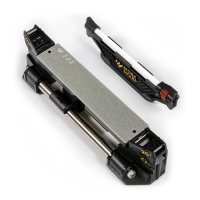 Guided Sharpening System w/ Pivot
Steve's Pick
|
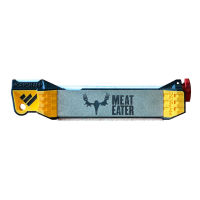 Guided Field Sharpener Janis's Pick
|
 Whetstone Sharpener Danielle’s Pick
|
 Ken Onion Edition Knife and Tool Sharpener
Kevin's Pick
|
|
|---|---|---|---|---|
| Grit | 320 coarse, 600 fine, fine ceramic rod | 320 coarse, 600 fine, fine ceramic rod, leather strop | 1,000 fine, 6,000 super-fine | 120 extra coarse, 220 coarse, 1,000 medium, 3,000 fine |
| Guided Angle | 17°, 20° | 20°, 25° | 15°, 17° | 15°, 20°, 25°, 30° |
| Field or Kitchen | Both | Field | Kitchen | Kitchen |
| Weight | 1.8 lbs. | 4.6 oz. | 2.25 lbs. | 3.1 lbs. |
| Price | $60* | $35* | $30* | $140* |
| Field Notes | Field Notes | Field Notes | Field Notes |
What Makes a Knife Sharpener Good
Appropriate abrasion, stability, and consistency make a really good knife sharpener. You don’t want wobbles along your blade, and must follow a consistent angle for the sharpest knife possible. Work Sharp makes sharpeners built with you in mind with angle guides, secure footing, and a structure built to last.
Sharpen Like a Samurai
The infamously lethal katana did not get that way by accident. And since the times of feudal Japan, much really hasn’t changed about sharpening. Samurais used a two-step process to get their blades razor-sharp.
First, they’d grind the edge on low grit grinding stone, working up to fine grit. A coarser grit will remove more metal from the blade, creating a burr and angled edge. Then the finer grit will refine the edge into a sharper blade. After grinding, they’d finish sharpening the sword on water stones. We now call these whetstones. Essentially it’s a super-fine grit stone that uses water to lubricate the surface to create an ultra-sharp finish.
You don’t have to be a samurai or swing a katana to have the sharpest knives on the butcher block. To read more on how to sharpen a knife properly, click here.
A Note on Abrasive Materials
Ultimately, what abrasive material you’d like to use is a personal preference. The powered knife and tool sharpener will certainly get the job of sharpening done faster than the zen art of the whetstone, but you will need to replace the abrasive belts periodically as they wear down.
A ceramic rod or leather strop is used more for removing micro-abrasions on the blade than creating a burr, so don’t go into the field with a dull knife and a ceramic rod expecting to sit on a hill and sharpen your blade into butchering condition. But if you’re halfway through an elk breakdown and find your knife needing a quick shape-up, it’s a great option.
Field notes from the MeatEater Crew
Steve's Pick
As someone who has butchered and cooked everything from huge Alaskan moose to soggy muskrats to freshly-speared fish, Steve Rinella knows the importance of a sharp knife. "Work Sharp changed the game with their original powered knife and tool sharpener, and they've since produced some amazing manual sharpening tools," Steve said. "By putting their emphasis on helping customers identify and maintain the proper angles for their cutlery, they have helped thousands upon thousands of hunters and anglers get a better edge on their gear."
Specifications
- Grit: 320 coarse, 600 fine, fine ceramic rod
- Guided Angle: 17°, 20°
- Field or Kitchen: Both
- Weight: 1.8 lbs.
- Price: $60
Janis's Pick
As a hunter who seeks out big, backcountry Western hunts, Janis Putelis needs a portable way to keep his blades sharp far from home. "I like the Work Sharp guided field sharpener. It's light enough that I don't mind carrying it, and the four different sharpening surfaces can get a blade super sharp," Janis said. "The built-in ramps keep the blade at the right angle so I don't have to think too hard about the whole thing."
Specifications
- Grit: 320 coarse, 600 fine, fine ceramic rod, leather strop
- Guided Angle: 20°, 25°
- Field or Kitchen: Field
- Weight: 4.6 oz.
- Price: $35
Danielle's Pick
When Danielle Prewett isn’t in the field or garden, she’s cooking up a delicious meal with her harvest in the kitchen. "I started using Work Sharp’s whetstone for my chef knives about a year ago," Danielle said. "The ceramic stone puts a really fine finish on my blades, and their guides make it super easy to use."
Specifications
- Grit: 1,000 fine, 6,000 super-fine
- Guided Angle: 15°, 17°
- Field or Kitchen: Kitchen
- Weight: 2.25 lbs.
- Price: $30
Kevin's Pick
Renowned chef and lifelong hunter Kevin Gillespie knows about putting hard-worn miles on knives. "There comes a time in the life of a knife, either through use or abuse, when you need to pull out something a bit more serious," Kevin said. "That tool for me is the Work Sharp x Ken Onion Knife and Tool Sharpener. This thing has enough power to completely rebuild a damaged blade while simultaneously having enough control over the speed and grit of the sharpener that you won’t destroy your knives."
Specifications
- Grit: 120 extra coarse, 220 coarse, 1,000 medium, 3,000 fine
- Guided Angle: 15°, 20°, 25°, 30°
- Field or Kitchen: Kitchen
- Weight: 3.1 lbs.
- Price: $140

